DPTechnics
Microcontroller Boards
Bluetooth
Walter
A certified ESP32-S3 module with LTE-M, NB-IoT, and GNSS for prototyping and production
Funding ended on May 02, 2024 at 04:59 PM PDT.
DPTechnics
Microcontroller Boards
Bluetooth
Funding ended on May 02, 2024 at 04:59 PM PDT.
Walter is a small-form-factor IoT system-on-module (SoM) that combines a powerful ESP32-S3 system-on-chip (SoC) with a second-generation Sequans GM02SP LTE-M/NB-IoT 5G modem and GNSS receiver. Its ESP32-S3 provides many built-in peripherals as well, including UART, SPI, I²C, CAN, Wi-Fi b/g/n, and Bluetooth 5. Walter is the only module that packs all of these connectivity options into such a small package.
| 1. 5G Modem & GNSS receiver | 6. Integrated GNSS LNA + SAW | 11. 2.54 mm pin headers |
| 2. Reset button | 7. 3.3 V out software switch | 12. Test pads |
| 3. USB Type-C | 8. Ultra low sleep current DC-DC | 13. Nano SIM slot |
| 4. 5G antenna connector | 9. ESP32-S3 SoC | |
| 5. GNSS antenna connector | 10. Wi-Fi & BLE antenna |
To help you get the most out of Walter, we have published the schematic and the KiCAD footprint, both of which are available on GitHub, along with our datasheet, which describes all pins and test pads so you don’t have to go hunting for them.
Walter comes with a range of fully open-source software libraries so you can jumpstart your 5G IoT project in minutes using your preferred languages and toolchains. It supports ESP-IDF, Arduino, MicroPython, and Toit. No special dongles are needed to program Walter – just connect it directly to your dev machine using a regular USB Type-C cable.
Our embedded-software team is continuously improving Walter’s open-source libraries, which you can find in our GitHub repo. These libraries are optimized for flexibility and ease-of-use, with a particular emphasis on:
Evolving a prototype into a commercial offering is the most daunting stage of product development. Walter aims to reduce this complexity, especially for low- to medium-volume production. It is the perfect entry point for businesses looking to develop their own 5G connected IoT products.
How did we approach the challenge of designing a board like this? First of all, you will find no unnecessary components on Walter. There are no sensors, no RGB LEDs, and no charging circuits, to name just a few intentional omissions. Each of these "features" would have increased Walter’s cost while sitting unused most of the time for most applications. Instead, you will find a number of test pads, on the bottom of the board, which can be used to automate firmware flashing and product testing.
Secondly, we have certified Walter for FCC, CE, UKCA, IC, and RCM (for Australia and New-Zealand). Unless you add another radio to your Walter-based product, your certification costs and risks will be minimal.
Next, our team has years of experience in embedded development, so we know that most dev boards are only available for a few years, which can be a problem because IoT products are often deployed in the field for much longer than that. Reliable, long-term support is essential for IoT products, so we have negotiated contracts with our component suppliers that allow us to guarantee availability for a minimum of ten years.
Finally, did we mention how small we made it? Walter is only 24.8 x 55 mm, so it will fit in just about any product. In fact, we’re not aware of any possible way to make a smaller standalone board with support for these RF technologies.
For many battery-powered applications, Walter will spend most of its time in deep sleep. It is therefore critical that we consume as little power as possible in this mode, which was among our key requirements during the design stage. We are extremely proud of the result and have validated that Walter only consumes 9.8 µA in deep sleep mode:
As a result, Walter can sleep for over 34 years on a single 18650 cell with an average capacity of 3000 mAh.
There are many products on the market that are based on the PyCom GPy, which is EoL and no longer available. Walter is fully pin compatible with the GPy and can be swapped in without redesigning carrier boards. PyCom’s closed-source solution suffered from various hardware shortcomings, as well. We have addressed all of those issues, making Walter not just a replacement, but a serious upgrade. Have a look at this wonderful feedback we received from one of our beta testers:
We have converted our GPy application over to Walter with good results. Key points include:
- Our hardware design has not changed. The Walter was a plug-in replacement for the GPy.
- Minor changes to the code were required due to different pin assignments.
- The biggest change we made was switching from using the thread module to using the asyncio module. This change was just an improvement we made to our code. The thread version also worked although MicroPython has limitations of what can be done in the interrupt routine (see Schedule for workaround).
- All our code for talking directly to the modem with AT commands works perfectly. We do not use the Walter modem routines at all. The modem is backward compatible with the GPy.
- One great improvement with Walter is the ability to reset the modem from the software directly.
- Another great feature is that we can now run the latest version of MicroPython unchanged with Walter (a fork is not required).
Thanks for the great work!
Tommy Lanier,
Computer Engineered Solutions, Inc.
Walter has a built-in Wi-Fi and Bluetooth antenna but relies on external antennas for optimal LTE-M/NB-IoT and GNSS operation. It includes two u.FL connectors for this purpose. We have chosen Taoglas as our recommended antenna partner because of their quality and their ten-year availability guarantee. The antennas in our devkit are adhesive, which makes them easy to integrate into your products by attaching them to an enclosure.
Although it is possible to use Walter as a standalone module, it was designed to be incorporated into your product by way of a carrier board. We provide just such a carrier board to help you design and build proof-of-concept IoT products as quickly as possible. We named our carrier board Walter Feels, and it contains everything you need to build a battery-powered IoT sensing platform:
We have created a sample Arduino sketch that you can run on Walter Feels. It sends data to the Walter Demo platform, which immediately visualizes all incoming sensor and power-management data.
We created Walter for remote sensing and control applications, and we’ve been working hard to perfect it by incorporating feedback from beta testers who’ve given us insights related to various other possible applications, including:
The examples above are only the tip of the iceberg. Our team is already thinking about pet trackers, ticket printers for online-delivery services, IoT access-control systems, and remote pump controls, among other possible applications. And we can’t wait to hear your ideas as well!
Vin pin| Walter | Pycom GPy | AVR IoT mini | Arduino MKR NB 1500 | iLabs RP2040 connectivity | Particle BRN404X | |
|---|---|---|---|---|---|---|
| CPU | ESP32-S3 (Dual 240 MHz) | ESP32 (Dual 240 MHz) | AVR128DB48 (24 MHz) | SAMD21 (48 MHz) | RP2040 (Dual 133 MHz) | nRF52840 (64 MHz) |
| NB-IoT | Yes | Yes | Yes | Yes | Yes | Yes |
| LTE-M | Yes | Yes | Yes | Yes | Yes | Yes |
| 2G GPRS | No | No | No | No | Yes | No |
| 3GPP release | 14 | 13 | 14 | 13 | 13 | 14 |
| GNSS | Yes | No | No | No | No | No |
| WiFi | Yes | Yes | No | No | Yes | No |
| BLE | Yes | Yes | No | No | Yes | Yes |
| Size (mm) | 24.8 x 55 | 20 x 55 | 23.78 x 81.69 | 25 x 67.6 | 42 x 54 | 22.86 x 50.8 |
| Battery charger | No | No | Yes | Yes | Yes | Yes |
| USB connector | USB Type-C | None | USB Type-C | Micro-USB | USB Type-C | Micro-USB |
| Open Source | HW + SW | No | HW + SW | HW + SW | HW + SW | HW + SW |
| RAM KiB | 2,576 | 4,608 | 16 | 32 | 264 | 256 |
| Flash (KiB) | 16,384 | 8,192 | 128 | 256 | 8,192 | 1,024 |
| Software | ESP-IDF, Arduino, MicroPython, Toit | MicroPython | C | Arduino | Arduino | Device OS |
| Deep sleep (uA) | 9.8 | 17 | 70 | 500 | 260 | 106 |
| Certifications | CE, FCC, IC, UKCA, NZL, RCM | CE, FCC, IC, RCM | CE | CE, UKCA, RCM | Unknown | FCC, ISED |
| Available | Yes | No | Yes | Yes | Yes | Yes |
We are continuously improving our documentation and design documents for Walter and its accessories. We invite you to have a look at (and contribute to!) the following resources:
Based on feedback from our beta testers, we will launch a documentation website to make some of the information above more accessible and to host sample code for various applications that you can use to get started with your own projects. Our team is actively monitoring GitHub issues and email correspondence, so if you’d like help implementing your project, let us know, and we may be able to offer contracting support as well.
The Walter team has over seven years of experience in hardware and software development for the Internet of Things. Over the past few months, we’ve been working with our Belgian manufacturing partner to perfect our design and prepare for mass production. Walter will be manufactured in a state-of-the-art European factory, as demonstrated in the video below:
After our production run is complete, we will package everything up and send it along to Crowd Supply’s fulfillment partner, Mouser Electronics, who will handle distribution to backers worldwide. You can learn more about Crowd Supply’s fulfillment service under Ordering, Paying, and Shipping in their guide.
We have worked on Walter for about a year. During that time, it’s gone through a total of six different iterations, each of which was tested not only by our own team but by a network of beta testers all over the world. You can see the results in realtime on our demo platform. We are quite certain that Walter is stable, even when operating in difficult environments, and we believe that our biggest risks have already been taken.
We are currently finalizing our certification process, which has involved two stages:
We expect to complete the above certification process any day now. While there is always a chance that we could fail one of the formal compliance tests, doing so would just lead us to mitigate the issue by implementing relatively minor design changes. We would anticipate no more than a one- to three-month delay should this occur.
"A cutting-edge, certified ESP32-S3 module with LTE-M, NB-IoT, and GNSS capabilities, set to revolutionize IoT (Internet of Things) prototyping and production."
"Walter is an ESP32-S3-based IoT system-on-module supporting LTE-M/NB-IoT 5G and GNSS. This compact device is certified for FCC, CE, Australia SDoC, and New Zealand SDoC, so this module can be used for prototyping and production."
"The Walter library and sketches use the optimized UDP and CoAP protocols for communication. DPTechnics started a new open-source library that is up to the task, and maybe it will become the new standard for modern cellular protocols."
"Compact Walter SoM scales from prototype to mid-volume production. It contains wireless connectivity, 10-year availability, and 24 GPIOs."
Produced by DPTechnics in Knokke-Heist, Belgium.
Sold and shipped by Crowd Supply.
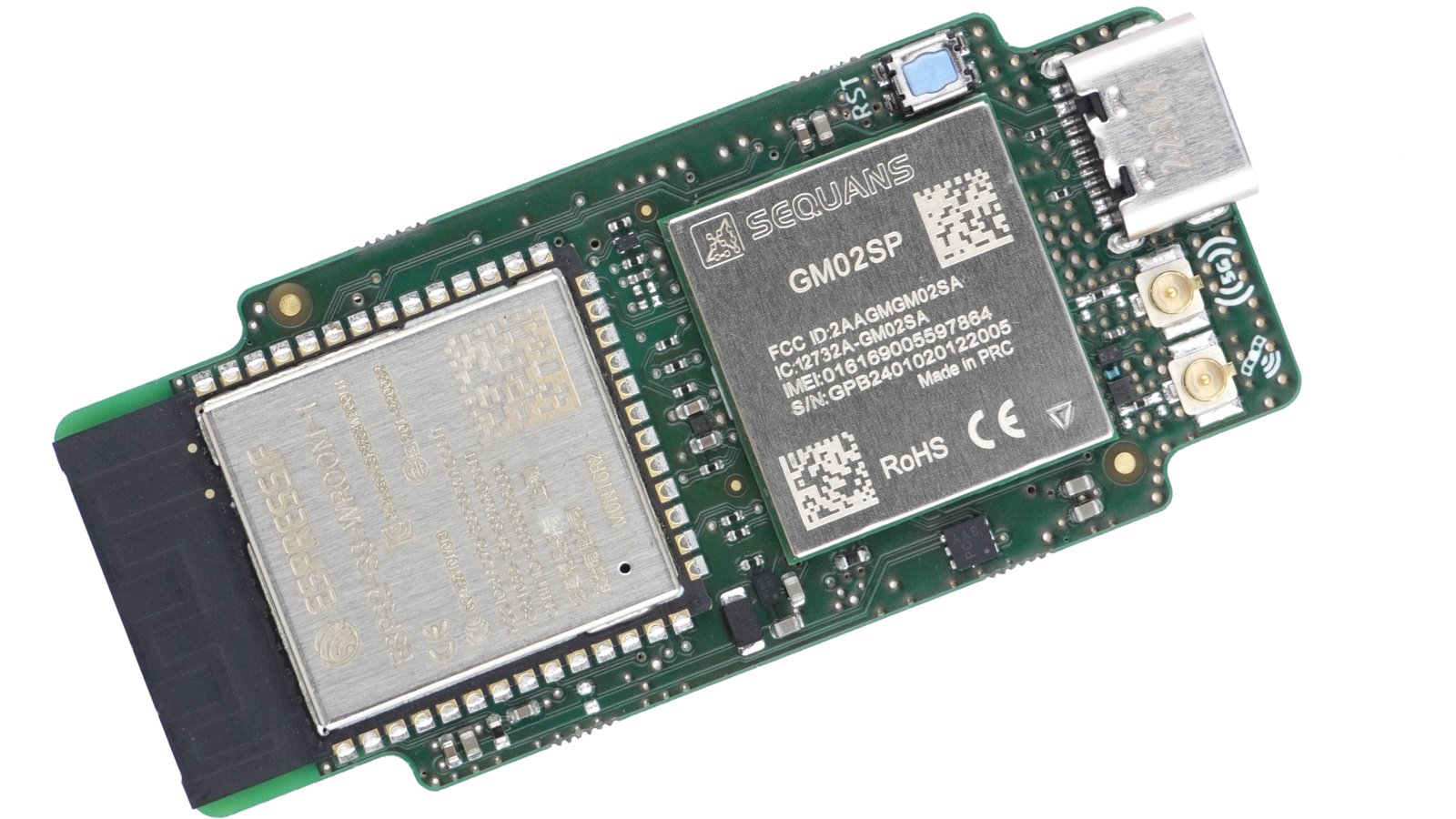
Walter is a small-form-factor IoT system-on-module (SoM) that combines a powerful ESP32-S3 SoC with a 5G modem and a GNSS receiver. It supports Wi-Fi, Bluetooth, LTE-M, NB-IoT, and GNSS connectivity.
Want to buy this item? Check the current project page for the latest information.
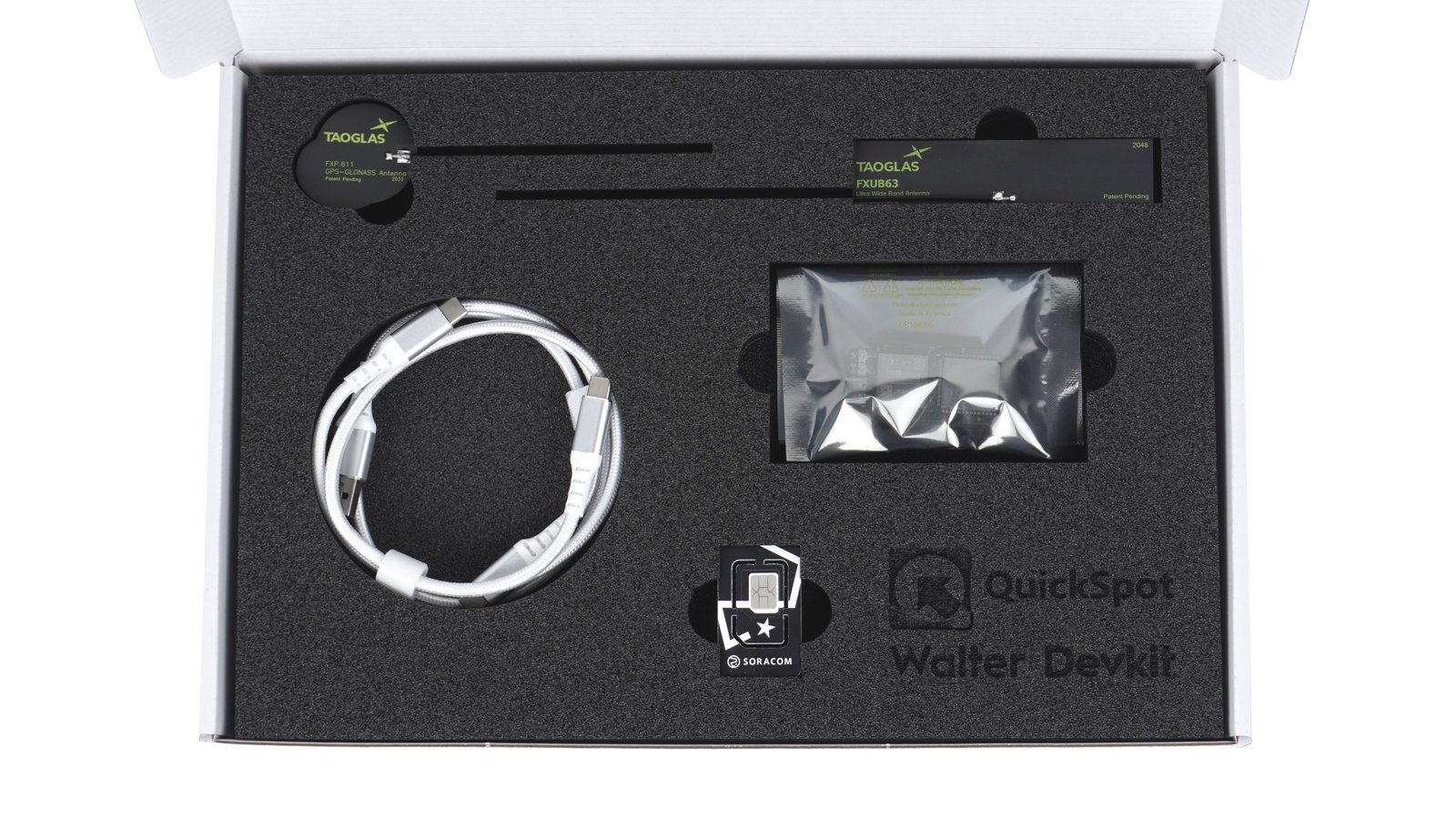
Everything you need to get Walter online in a matter of minutes, including antennas, a 250 MiB worldwide Soracom SIM card, a USB Type-A to Type-C cable, and a USB Type-C to Type-C cable. Our devkit also comes with 30 minutes of expert support to help you kickstart your project. (You'll be able to book a video meeting with one of our engineers by providing the IMEI and MAC addresses of your modem.) Walter is a small-form-factor IoT system-on-module (SoM) that combines a powerful ESP32-S3 SoC with a 5G modem and a GNSS receiver. It supports Wi-Fi, Bluetooth, LTE-M, NB-IoT, and GNSS connectivity.
Want to buy this item? Check the current project page for the latest information.
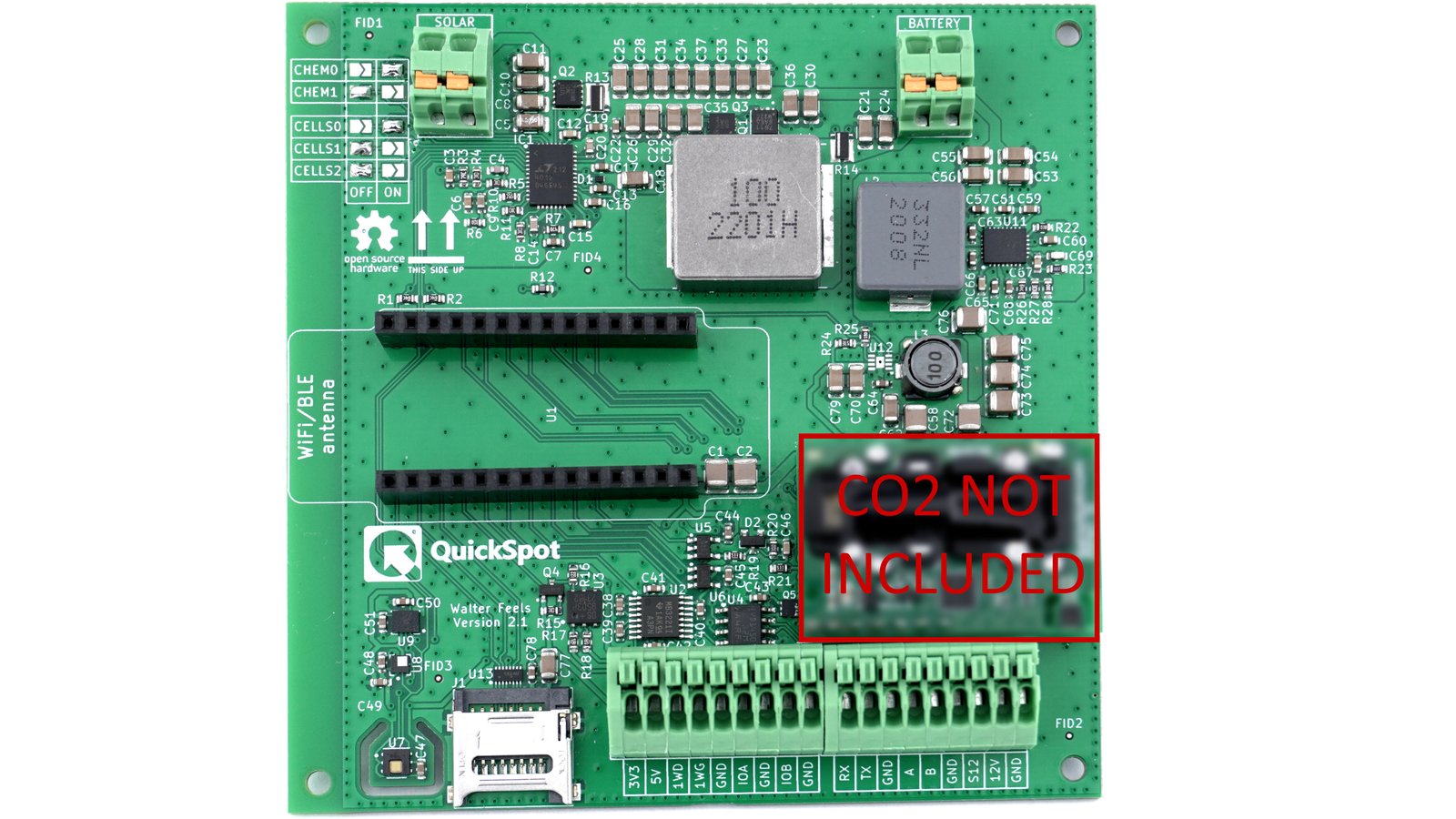
Walter Feels is a carrier board for the Walter module. It provides an MPPT battery charger, battery management with coulomb counter, and various sensors, including temperature, humidity, barometric pressure, and 6-DoF IMU. Walter Feels supports interfaces like RS232, RS485, SDI-12, CAN bus, and GPIO with ADC functionality. It includes a MicroSD card slot and provides power output at 3.3, 5, and 12 V. It also hosts a connector for the Sensirion SCD30 absolute CO₂ sensor (not included).
Want to buy this item? Check the current project page for the latest information.
Knokke-Heist, Belgium · dptechnics · dptechnics · dptechnics.com
We develop and produce next-generation, internet-connected products, from embedded systems to software to industrial design. QuickSpot is our line of IoT building blocks designed to help you focus on your product rather than on low-level technical details.
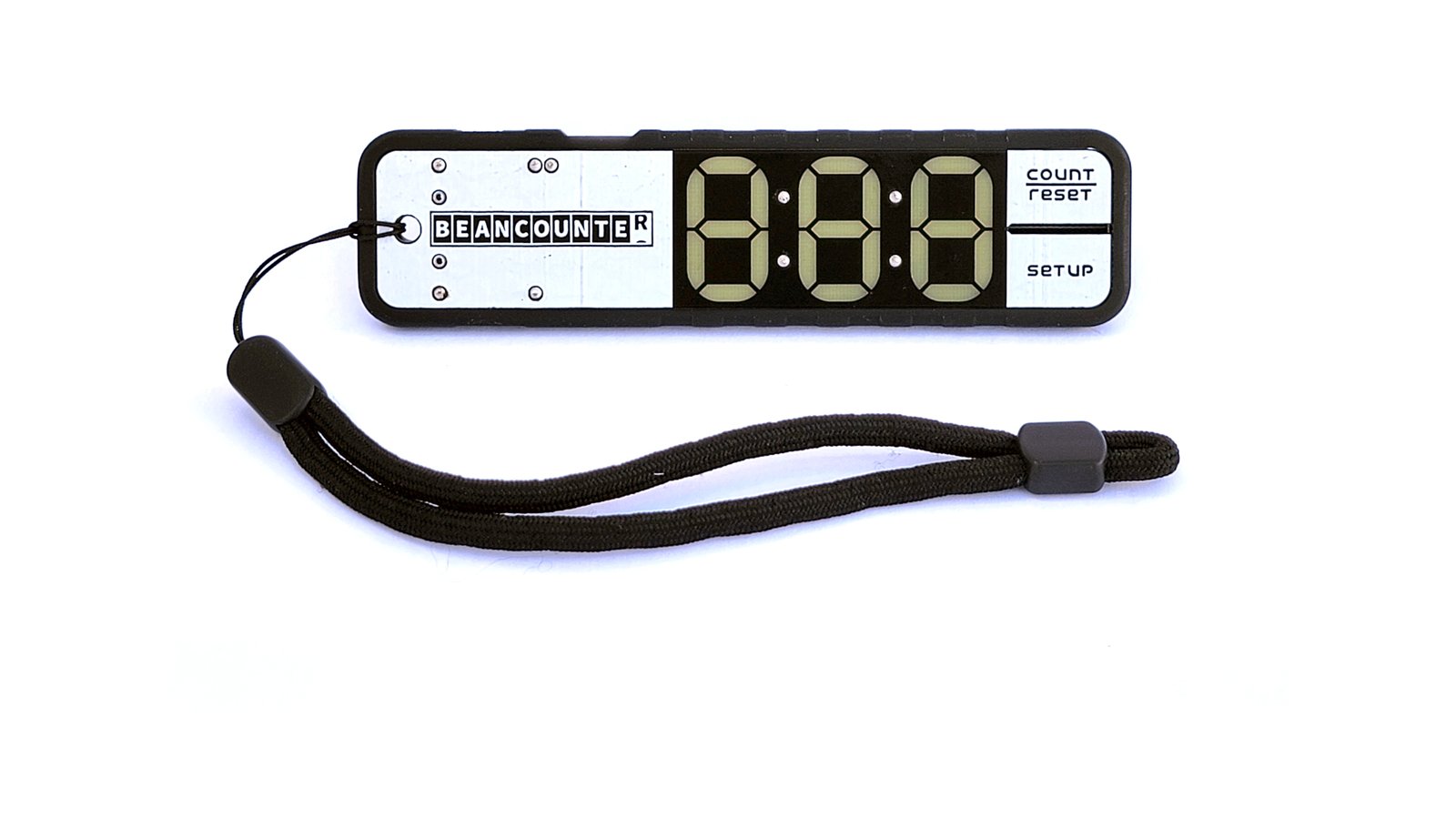
A simple, battery-powered, pocket-sized, open-source parts counter for 8-mm cut tape and partial reels
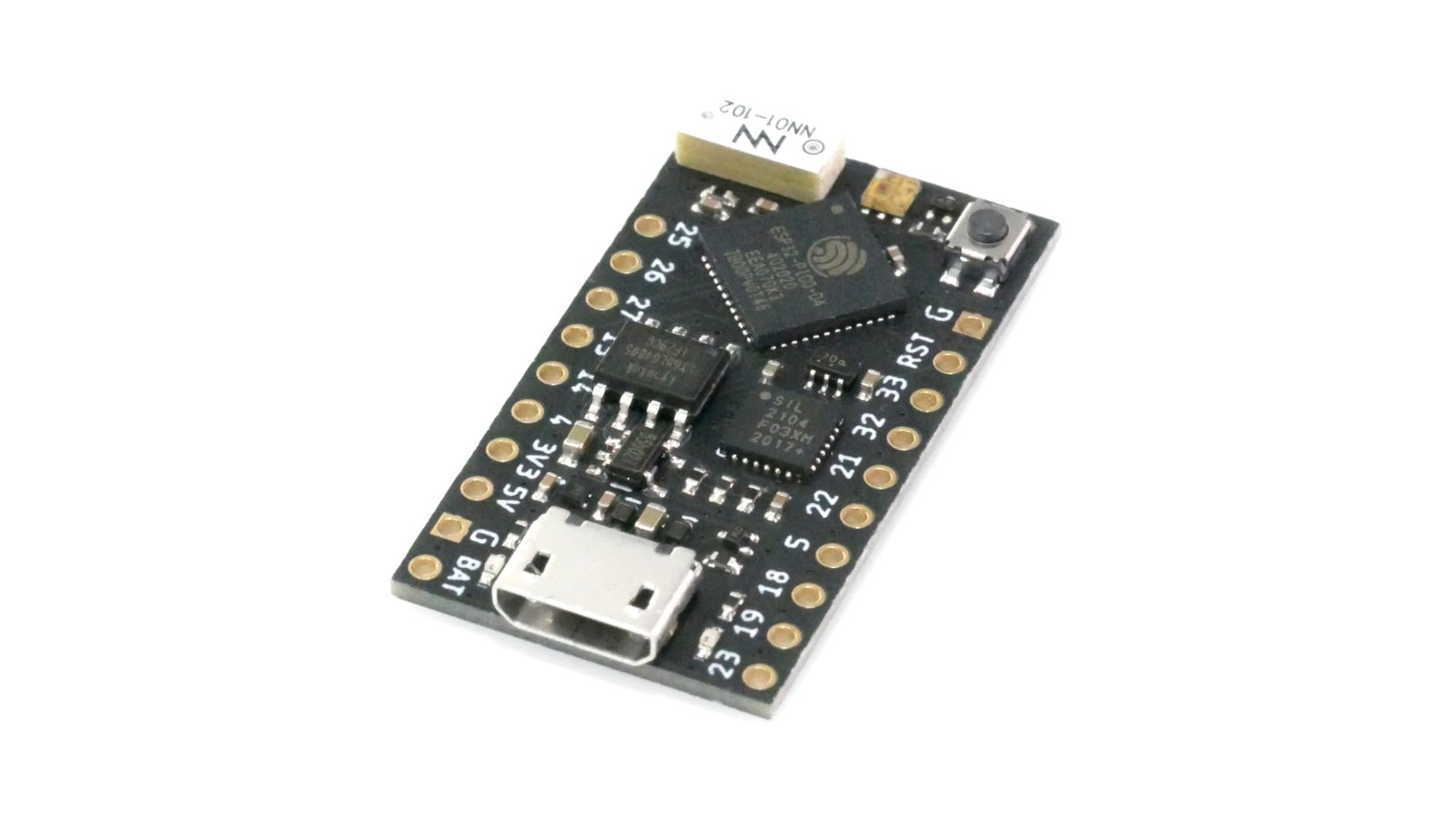
A tiny, mighty ESP32 development board
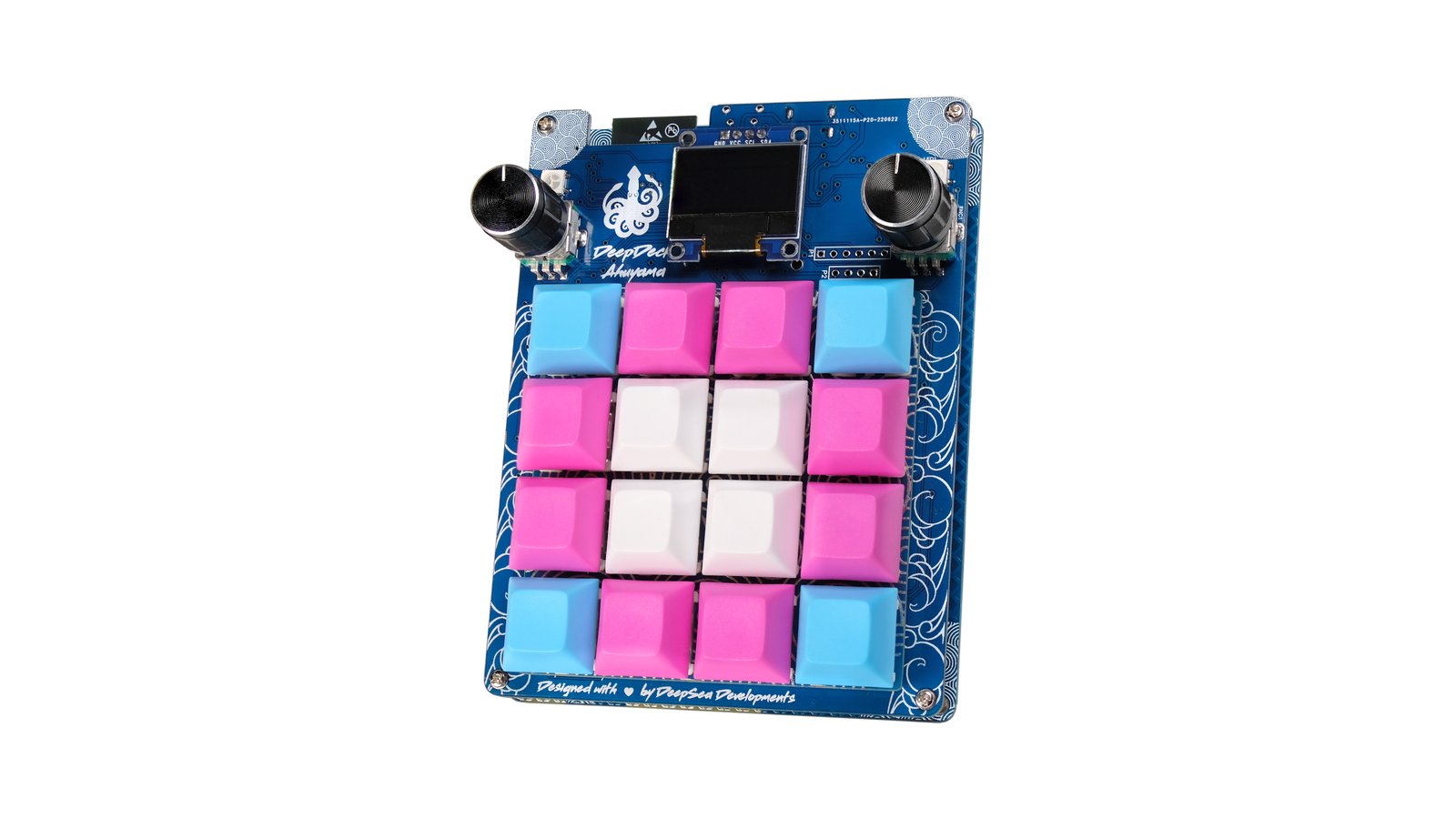
Wireless, fully programmable, open source, ESP32 macropad featuring 16 RGB, mechanical, hot-swappable keys and two RGB rotary encoders